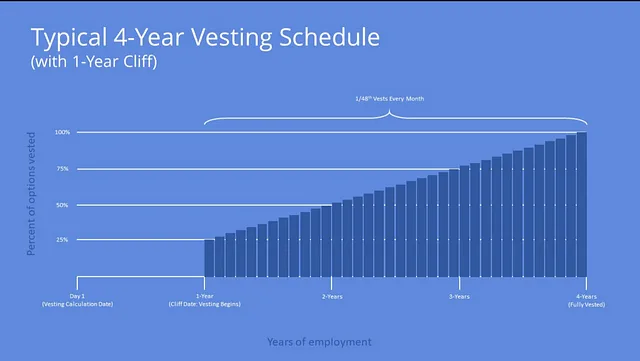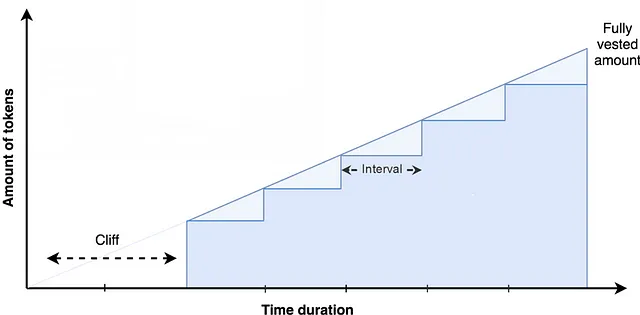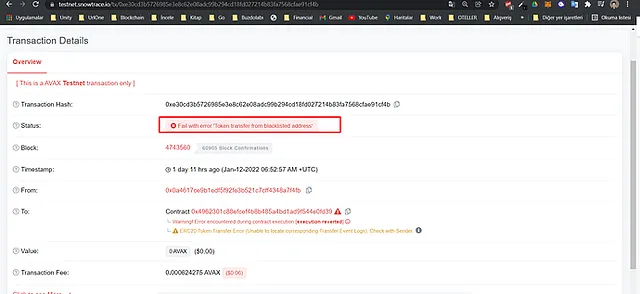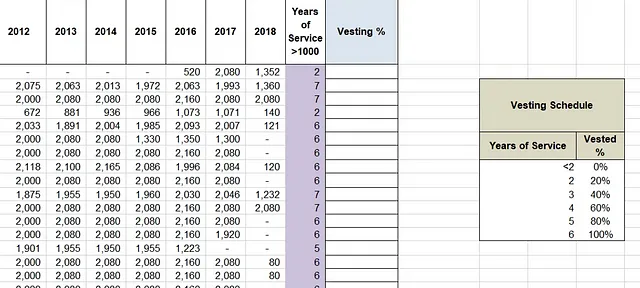Token Vesting: How to create token vesting plans for your team/employees


Everything you need to understand current token vesting plan approaches, plus a simple guide to creating and share custom vesting plans with your team. (in under 5 minutes)
Overview of traditional vesting schedules
In traditional startups, employees are often given stock options, RSUs, or some other type of equity agreement both when they are hired. This serves as a way for the employee to receive compensation + an additional upside reward (part of the company). To align expectations and outcomes, this reward is issued through a vesting schedule, where the recipient receives the reward at a set schedule over a period of time.

A key part of vesting schedules is that they are revocable should the employee leave or be fired. This allows the company to deliver upside for great employees who stay through their schedules, and also protects them from giving away equity from people who exit the company. Combine this with cliffs, periodic vesting periods, and other vesting features and you have a powerful tool that every startup relies on.
How token vesting is different.
When applied to tokens, vesting schedules serve the same job but have greatly different tools and technologies for creating, issuing, and managing them. Instead of distributing traditional shares, tokens are allocated to recipients with their ownership rights gradually unlocked over time. This is often complicated by governance participation where organizations may want to mirror traditional vesting for the financial component of token allocations, but allow for full or partial governance participation with unvested tokens as a means of engaging an early tokens most dedicated builders.

Same vesting schedules, executed differently
Two approaches to token vesting
#1) Smart contract-based vesting:
One approach to implementing token vesting is through smart contracts. With this approach, tokens are held in secure escrow smart contracts with recipients being able to claim vested tokens on the predefined schedule. This is considered the most secure, approach to token vesting as it minimizes human error and risk.

Pros: Secure, free, minimizes human error, governance rights possible
Cons: Clunky, hard to create, hard to claim for recipients
#2) Spreadsheet-based vesting:
Another method involves using spreadsheets to manage token vesting schedules. While this approach may seems straightforward initially, it carries significant risk. Manual handling of vesting schedules on spreadsheets is error-prone, susceptible to manipulation, and lacks transparency and trustlessness that onchain solutions offer.
Several token vesting platforms rely on a spreadsheet based approach that combine spreadsheet systems with manual onchain distributions.

Pros: Familiar process
Cons: Time consuming, human error, burdensome for recipients, risky
Create onchain token vesting plans using Hedgey.
Hedgey was launched as a public good to give teams better access to industry-leading, onchain token vesting infrastructure. Hedgey is a combination of audited, battle-tested smart contracts with the tier-1 UIs for issuers and recipients to track and manage their plans. A quick overview:

App: app.hedgey.finance
Core features:
Smart contract based
Single contract for multiple recipients (cheap to use)
Audited by Consensys Diligence (the best)
100% free to create and use
Linear (streaming) and periodic vesting schedule compatible
No accounts needed to access for issuers or recipients
Dedicated SAFE app
Instant access to vesting plans for recipients
Loaded with customizable feature sets
Creating a vesting plan on app.hedgey.finance
Go to app.hedgey.finance and click vesting plans in the left column and get started
Feel free to reach out to our support or book a time to chat if needed.
Sharing vesting plans with your team
Have them go to app.hedgey.finance in the left column and connect their wallet
Feel free to share our support channel for assistance and let them know they can book a time to chat if needed.
How easy is it for your team to track and claim tokens?
Incredibly easy. Share this video with them.